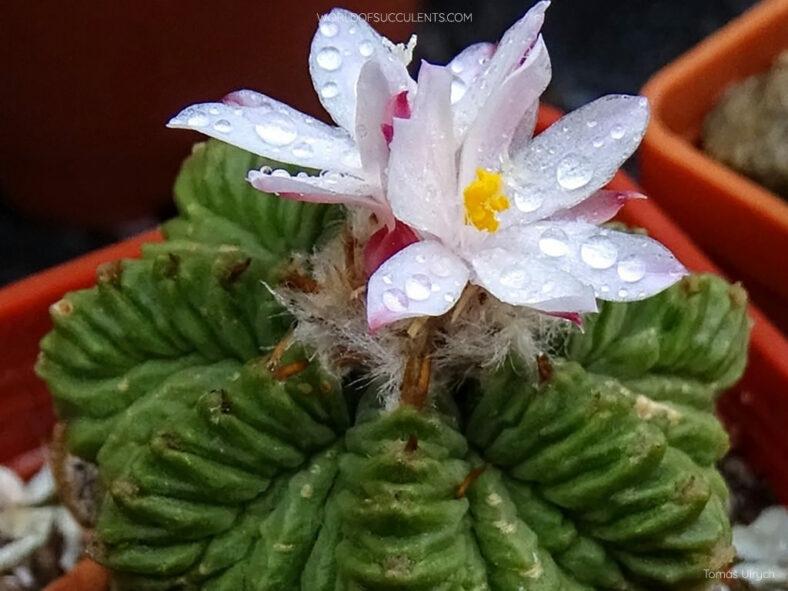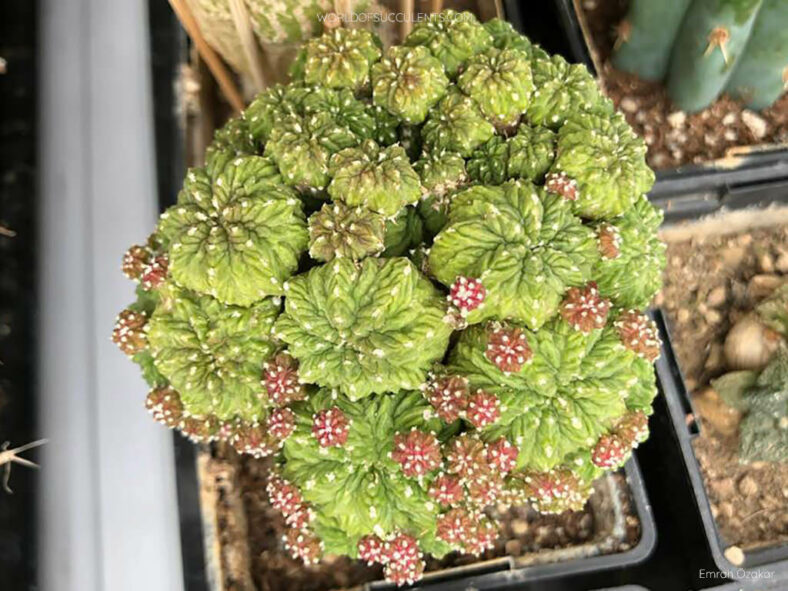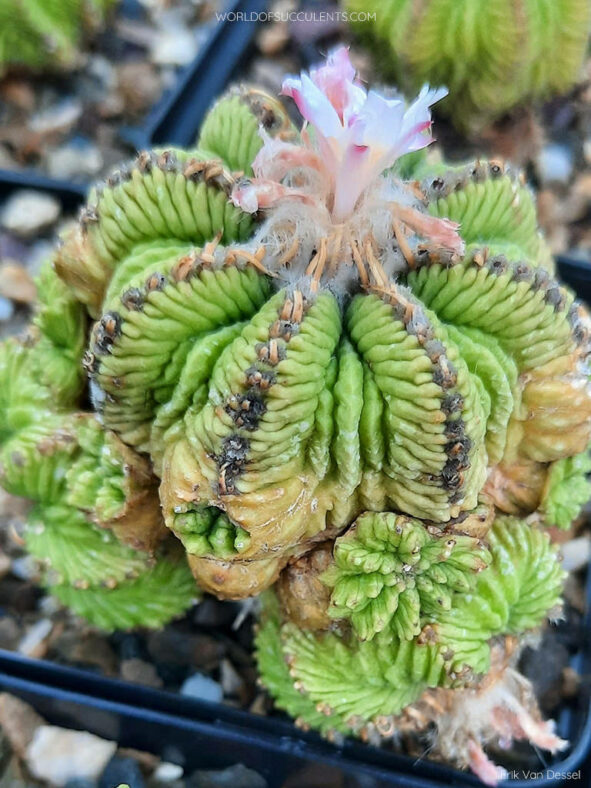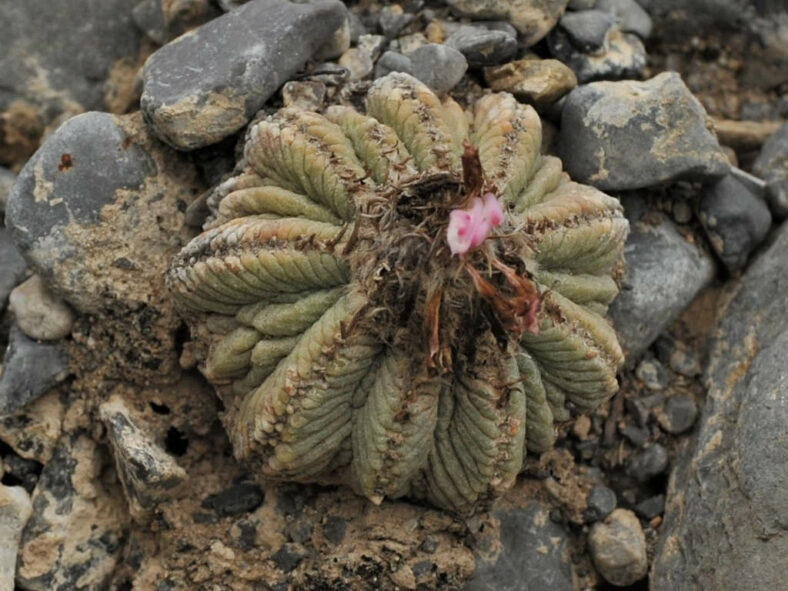Aztekium ritteri is a highly slow-growing cactus with a long lifespan. In cultivation, it is often grafted and grows much faster than in its natural habitat.
Scientific Name
Aztekium ritteri (Boed.) Boed.
Common Name(s)
Aztec Cactus
Synonym(s)
Echinocactus ritteri
Scientific Classification
Family: Cactaceae
Subfamily: Cactoideae
Tribe: Cacteae
Genus: Aztekium
Etymology
The specific epithet "ritteri" (pronounced "RIT-ter-ee") honors Friedrich Ritter (1898-1989), a German botanist who collected and described many species of cacti.
Origin
Aztekium ritteri is native to Mexico. It occurs in the Sierra Madre Oriental in Nuevo León at elevations ranging from 2,620 to 3,430 feet (800 to 1,045 m).
Description
Aztekium ritteri is a small, very slow-growing cactus with a gray-green, almost spineless stem that has 5 to 11 well-pronounced ribs. At first, it grows solitary, but as it matures, it slowly produces offsets, forming a small clump. The stem is subspherical, somewhat depressed at the top, and can reach a diameter of 2 inches (5 cm). It has tufts of dense wool near the tip and pseudo-ribs between the actual ribs. The ribs are lined with yellowish-white, felty areoles and have transverse wrinkles. Only those areoles near the tip bear 1 to 3 yellowish to gray spines that all point upward. The spines can measure up to 0.15 inches (0.4 cm) long and drop off with age.
During the summer, Aztekium ritteri produces funnel-shaped flowers at the woolly tip. The flowers have white to pinkish inner petals and can reach a diameter of 0.4 inches (1 cm). The outer petals usually have a pink mid-stripe. The fruits are small, pink to almost white, berry-like, and open when ripe to release tiny dark brown to black seeds.

How to Grow and Care for Aztekium ritteri
Light: Aztekium ritteri thrives in bright, indirect light but can tolerate some direct sun. However, too much direct sunlight can cause sunburn. When grown indoors, it is best to place this cactus near a window where it can receive plenty of indirect sunlight.
Soil: For optimal growth, use well-drained soil. A typical cactus potting mix works well, or you can make your own.
Temperature: This cactus can tolerate high temperatures during summer but prefers cooler conditions in winter. It grows best in USDA Plant Hardiness Zones 9b to 11b, with average minimum winter temperatures ranging from 25°F to 50°F (-3.9°C to 10°C).
Watering: Aztekium ritteri prefers regular watering in summer. Water the plant infrequently during spring and fall, and keep the soil nearly dry in winter.
Fertilizing: As a slow-growing cactus, Aztekium ritteri only needs a small amount of fertilizer. Use a low-balanced soluble fertilizer diluted to half the recommended strength, but suspend feeding in winter.
Repotting: Regular repotting helps this cactus grow better, so repot it at the beginning of the growing season for the best results.
Propagation: Aztekium ritteri is typically grown from seeds, but the seeds have a very low germination rate. It can also be propagated by dividing offsets in spring and summer. For the best results, sow the seeds in late spring or summer.
Learn more at How to Grow and Care for Aztekium.
Toxicity of Aztekium ritteri
Aztekium ritteri has no reported toxic effects.
Links
- Back to genus Aztekium
- Succupedia: Browse succulents by Scientific Name, Common Name, Genus, Family, USDA Hardiness Zone, Origin, or cacti by Genus
Photo Gallery
Click on a photo to see a larger version.


